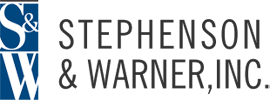News
July 2025 Newsletter
NEWSLETTER Upcoming dates: July 4 - Independence Day July 10- Tips for June 2025 Reported to Employer (Form 470) July 21- National Ice Cream Day July 23- Semi Annual Ohio Sales Tax is due July 27- Parents'
December 2025
December 2025 Newsletter Important Reminders Office Hours West Chester: Monday – Thursday 8:30- 5:00pm, Friday 8:30am- 4:00pm (This office is closed from Noon – 1pm for lunch daily) Hamilton: Monday-
November 2025
November 2025 Newsletter Important Reminders Office Hours West Chester: Monday – Thursday 8:30- 5:00pm, Friday 8:30am- 4:00pm (This office is closed from Noon – 1pm for lunch daily) Hamilton: Monday-
October 2025 Newsletter
October 2025 Newsletter Reminder to all Individual Clients that have Extensions- the Deadline to file is October 15th! Office Hours West Chester: Monday – Thursday 8:30- 5:00pm, Friday 8:30am- 4:00pm (This
September 2025 Newsletter
September 2025 Newsletter * Reminder to all Clients that have Extensions- if you have not submitted your tax documents-we need to have those as soon as possible. Thank You Important Reminders West
August 2025 Newsletter
Newsletter Upcoming dates: August 10- Ohio Commercial Activity Tax Quarterly Return August 15- Ohio Bureau Of Workers’ Compensation True Up Reports August 23- Ohio Monthly Sales, Sales & Use Tax
July 2025 Newsletter
NEWSLETTER Upcoming dates: July 4 - Independence Day July 10- Tips for June 2025 Reported to Employer (Form 470) July 21- National Ice Cream Day July 23- Semi Annual Ohio Sales Tax is due July 27- Parents'
